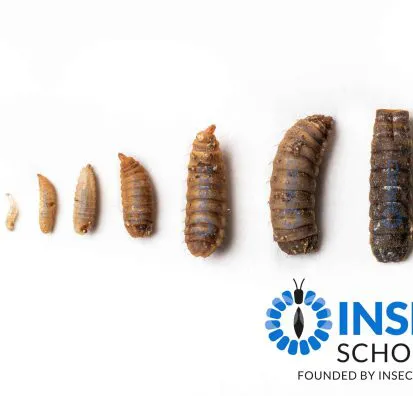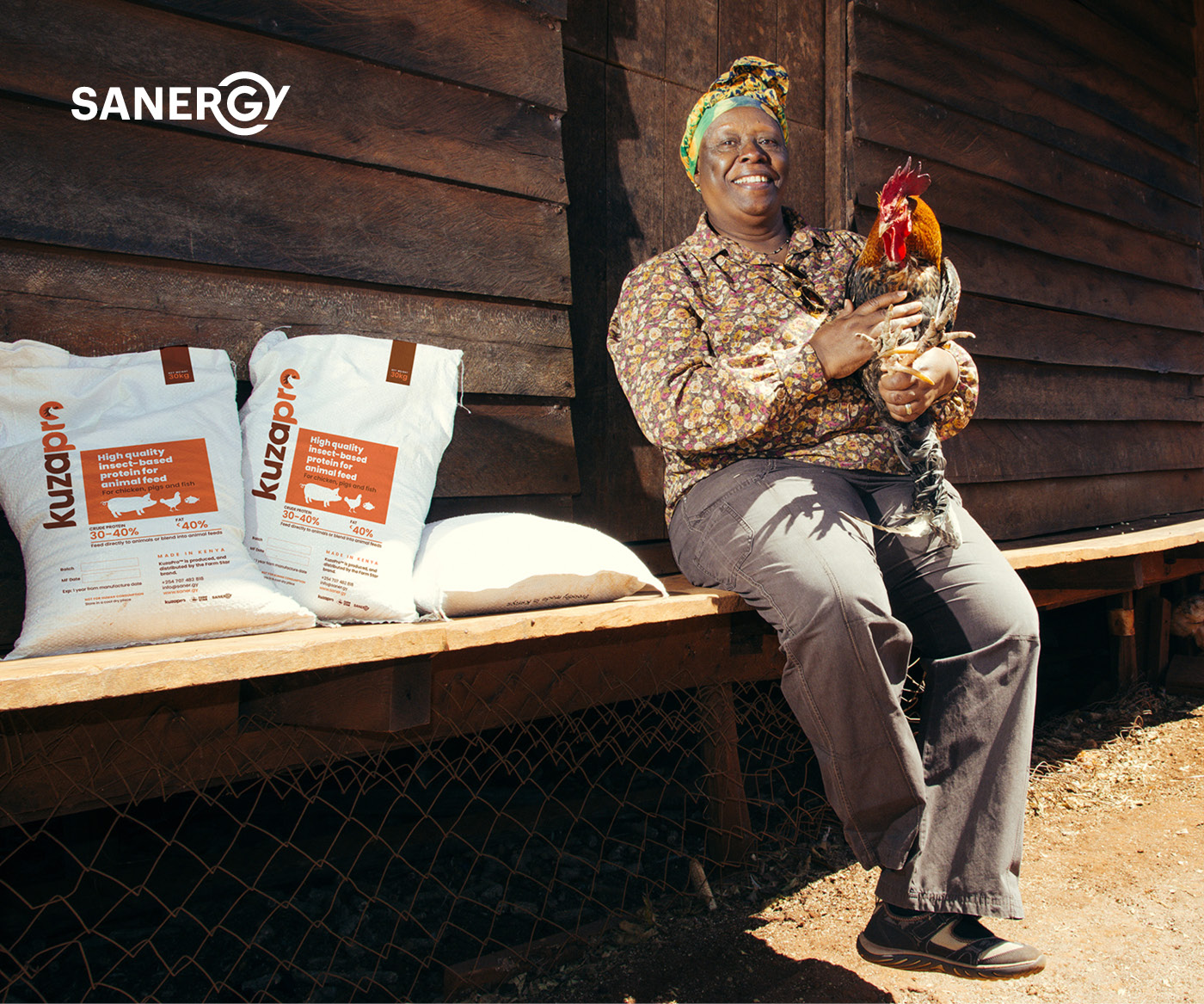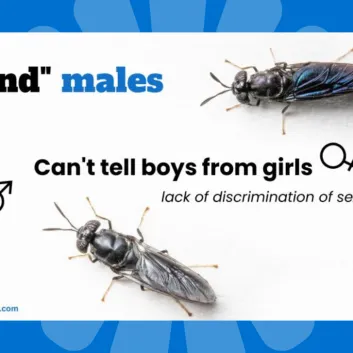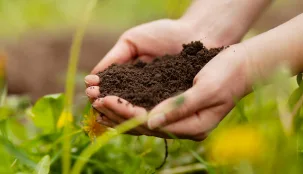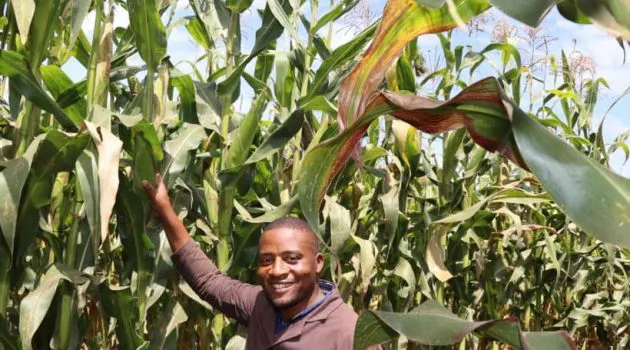Frass: A Sustainable and Effective Biofertilizer

Black soldier fly (BSF) frass is the solid excrement of BSF larvae, which can feed on various organic waste materials. BSF frass has been gaining attention as a potential biofertilizer, as it contains valuable nutrients, beneficial bacteria, and chitin, a natural biopolymer that can enhance plant health and soil quality. In this article, we will explore the advantages of using BSF frass as a biofertilizer and some of the challenges and opportunities for its application.
Nutrient Composition
BSF frass is rich in nitrogen, phosphorus, potassium, calcium, magnesium, and micronutrients, such as iron, zinc, copper, and manganese. The nutrient composition of BSF frass depends on the substrate that the larvae feed on, but generally, it has a balanced nitrogen:phosphorus pentoxide:potassium oxide (N:P$_2$O$_5$:K$_2$O) ratio of around 1:0.9:1.11. This makes BSF frass a suitable compound fertilizer for most crops, as it can provide the essential macronutrients for plant growth and development.
BSF frass also contains organic matter, which can improve the soil structure, water retention, and microbial activity. The organic matter in BSF frass consists mainly of chitin, which is the main component of the exoskeleton of insects. Chitin has several beneficial effects on plants and soils, such as:
- Stimulating the growth and activity of beneficial microorganisms, such as nitrogen-fixing bacteria and mycorrhizal fungi, which can enhance the nutrient availability and uptake by plants2.
- Inducing the plant’s natural defense mechanisms against pests and diseases, by activating the production of antimicrobial peptides and phytohormones, such as salicylic acid and jasmonic acid3.
- Reducing the leaching and volatilization of nitrogen, by forming complexes with nitrogen-containing compounds and increasing the soil cation exchange capacity4.
Benefits of BSF Frass as a Biofertilizer
Compared to synthetic fertilizers, BSF frass has several advantages as a biofertilizer, such as:
- Reducing the environmental impact of fertilizer production and use, by recycling organic waste materials and minimizing the greenhouse gas emissions and water pollution associated with synthetic fertilizer manufacturing and application.
- Enhancing the crop yield and quality, by providing a balanced and slow-release source of nutrients, improving the soil health and fertility, and increasing the plant’s resistance and tolerance to biotic and abiotic stresses.
- Offering a cost-effective and locally available alternative to conventional fertilizers, by utilizing low-cost and abundant organic waste materials and reducing the dependence on imported and expensive synthetic fertilizers.
Challenges and Opportunities for BSF Frass Application
Despite the potential benefits of BSF frass as a biofertilizer, there are also some challenges and limitations that need to be addressed, such as:
- The variability and uncertainty of the nutrient content and quality of BSF frass, depending on the substrate type, composition, and processing, as well as the BSF rearing conditions, such as temperature, humidity, and density.
- The lack of standardized methods and regulations for the production, analysis, and certification of BSF frass as a biofertilizer, which can affect the consumer confidence and acceptance of this novel product.
- The possible presence of pathogens, heavy metals, and other contaminants in BSF frass, especially if the substrate is derived from animal manure, slaughterhouse waste, or municipal solid waste.
To overcome these challenges and optimize the use of BSF excrements as a biofertilizer, some of the possible solutions and opportunities are:
- Developing and implementing quality control and assurance protocols for BSF frass production and application, based on scientific evidence and best practices.
- Conducting more research and field trials on the agronomic and environmental performance of BSF frass as a biofertilizer, under different crop types, soil conditions, and climatic scenarios.
- Promoting the awareness and education of farmers, consumers, and policymakers on the benefits and safety of BSF frass as a biofertilizer and creating incentives and policies to support its adoption and dissemination.
BSF frass is a promising biofertilizer that can contribute to the development of sustainable and circular agricultural systems, by transforming organic waste materials into valuable nutrients, beneficial bacteria, and chitin. BSF frass can improve the plant growth and health, soil quality and fertility, and environmental and economic sustainability of crop production. However, there are also some challenges and uncertainties that need to be addressed, such as the variability and quality of BSF frass, the lack of standards and regulations, and the possible presence of contaminants. Therefore, more research and innovation, as well as awareness and education, are needed to optimize the use and acceptance of BSF frass as a biofertilizer.
For more information about:
- Insect Bioconversion of Waste, please contact us at the Insect school. https://www.insectschool.com/
- Turnkey Insect Farms – https://www.insectengineers.com/bsfturnkey/production
- If you would like to book BSF industry keynote speaker Bob Holtermans for your event – https://www.insectengineers.com/about-us/speaker-bobholtermans





